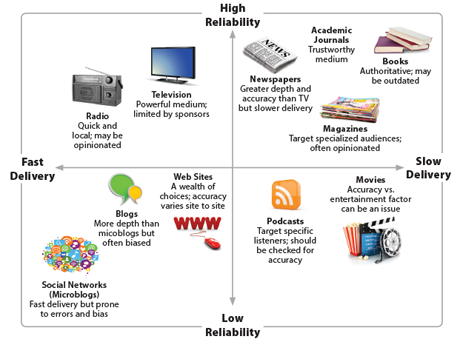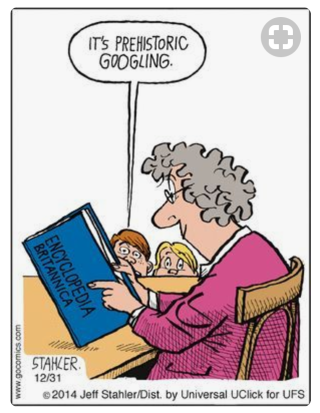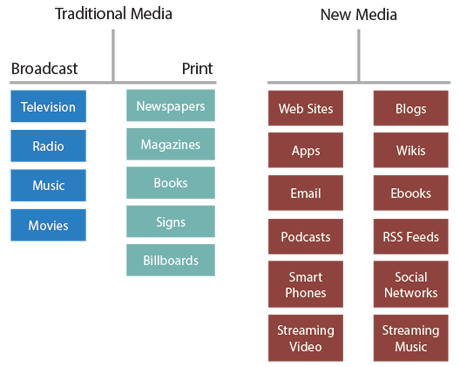The concept of “being literate” today has a bit of a different definition as time goes on. During my exploration of a definition of literacy, much to the same findings as Catherine, I also came across a few different definitions that focus on a socially constructed viewpoint on literacy.
“Literacy is a social construction, and being literate means having the ability to produce, interpret, and understand language (information to be seen or experienced) appropriately for these different social contexts.”
Nicholas Accardo (2017)
“Digital literacy is a social construct that has gained some momentum by its explanatory power in the face of technological change that has left some bewildered by the abilities of one generation with respect to another. That the term ‘literacy’ is attached to the concept shows the historical legacy, applicability and origin of the term. It is a concept mostly applied by an older generation about a younger generation (and especially the attitude towards technology of the latter).”
Doug Belshaw (2008), Open Educational Thinker
“Literacy, the ability to read, write, listen, speak, think critically and perform in different ways and for different purposes, begins to develop early and becomes increasingly important as students pursue specialized fields of study in high school and beyond.”
Wisconsin Common Core State Standards for Literacy in All Subjects (2014)
I agree that the concept of literacy is changing and is more than just reading and writing, especially when using Bloom’s Taxonomy approach. However, we still have reading and writing segregated from other subject areas that require these same skills applied to the different content areas of study.
While trying to address the idea of being “fully” literate mentioned in our blog prompt, I came across the model of Disciplinary Literacy. From the book “This is Disciplinary Literacy – Reading, Writing, Thinking, and Doing….Content Area by Content Area” by ReLeah Cossett Lent (2015). This type of approach identifies that:
“…reading, writing, thinking, reasoning, and doing within each discipline is unique—and leads to the understanding that every field of study creates, communicates, and evaluates knowledge differently. As such, each content-area teacher is responsible for showing students how to use discipline-specific literacy skills as tools for accessing content and, with a sigh of relief, incorporating reading strategies only when they make sense within the context of the discipline”
Therefore, we need to teach literacy concepts in all subject/discipline areas. This could include, but is not restricted to:
To further explore these literacies, you can visit 20 Types of Illiteracies by Kate Mulcahy (2014).
Now, to be able to teach literacy to each type of discipline, there are different types of media for which to use. There seems to be more types of media as time moves on, but the image below identifies the different types of traditional and new media that we need to expose our students to when teaching literacy based concepts.
In addition, the graphic below identifies the rate of delivery and the reliability of each type of media. It is evident which types of media our students are using (websites, blogs, social networking) due to accessibility, free cost, and immediacy. However, the concern is the reliability of this type of media because they may be inaccurate, biased, and/or opinionated. Therefore, we need to teach students other media to use as well as teach them how to use CRAAP to be critical of the ones they already use.

Delivery and reliability of different types of media
The following chart identifies essential skills needed specifically for media/digital literacy. What commonalities or specific differences do you see between all three?
| Elements of the Framework for Literacy in a Digital Age – NTCE (2019) | 21st Century Media Literacy Skills – Renee Hobbs | News and Media Literacy Skills – Common Sense Media |
| Participate effectively and critically in a networked world
Explore and engage critically, thoughtfully, and across a wide variety of inclusive texts and tools/modalities Consume, curate, and create actively across contexts Advocate for equitable access to and accessibility of texts, tools, and information Build intentional global and cross-cultural connections and relationships with others so to pose and solve problems collaboratively and strengthen independent thought Promote culturally sustaining communication and recognize the bias and privilege present in the interactions Examine the rights, responsibilities, and ethical implications of the use and creation of information Determine how and to what extent texts and tools amplify one’s own and others’ narratives as well as counter unproductive narratives Recognize and honor the multilingual literacy identities and culture experiences individuals bring to learning environments and provide opportunities to promote, amplify, and encourage these differing variations of language (dialect, jargon, register) |
Access skills, including listening skills, eading comprehension, keyboard, mouse, interface skills, understanding hyperlinking and digital space, and using effective search and find strategies.
Analysis skills, including being able to identify author, purpose, and point of view of a message, evaluate credibility and quality, recognize and resist stereotypes, understand how power relationships shape how information and ideas circulate in culture, and consider the economic, political and social context. Create and collaborate, including being able to brainstorm and generate ideas, work collaboratively to create messages using language, image, and sound, understand digital forms to curate and remix using feedback to edit/revise, write a press release, compose a tweet, upload a video to YouTube, use rhetorical strategies to inform, persuade and entertain in both online and offline real-world composition contexts Reflect and take action, including being able to understand the power of communication to maintain status quo or change the world, consider risks and harms of media messages, understand how differences in values and life experience shape people’s media use and their message interpretation, apply ethical judgment and social responsibility to online communication situations, understand how concepts of “private” and “public” are reshaped by digital media, appreciate and respect legal rights and responsibilities (copyright, fair use, attribution, etc), and advocate and self-govern at the local, regional, national, and international levels to make a difference in the world |
Learn to think critically. Decide whether the messages make sense, why certain information was included, what wasn’t included, and what the key ideas are, use examples to support opinions
Become a smart consumer of products and information. Determine whether something is credible, determine the “persuasive intent” of advertising and resist the techniques marketers use to sell products Recognize point of view. Create media responsibly. Identify the role of media in our culture. Understand the author’s goal. |
Renee Hobbs says we should keep in mind that “media literacy is going to look different in urban public schools than a media literate affluent, well-resourced school, which looks different than a media literate afterschool or library program. There is no one right way to teach it to students. There are many challenges, such as trying to keep up with the research because it’s published across so many disciplines. It’s important to create a robust learning environment where students can self-direct and ‘own’ their own learning in the context of a collaborative knowledge community.”
In our schools, like Hobbs identifies, “most educators are driven by a mix of protectionist and empowerment motives, wanting to limit the negative potential impact of life in a media-saturated society.” However, there are many teachers, lots of whom are in our course, that are “also wanting to enable children and young people to take full advantage of the many benefits that come from being an active, engaged producer and consumer in a dynamic, media-centric culture.” This relates to my last post of #digcitstateofmind, and outlines the difference between stages 3, 4, and 5 of a digital mindset.
To end my post, I wanted to share a video I found that was posted (way back) in 2009 that has educators explain “What does it mean to be literate in the 21st century?” Do you feel these are accurate to what we are experiencing in 2020? Is there anything that can be added to fit our current culture/society?



Great analysis of literacy!! I love the infographs and pictures you found. They really help you visualize different types of literacy as well as reliable ones. I think you are right that we often focus too much on reading and writing in segregated subjects and that we need to elaborate our scope to broader areas of learning. Again, very informative post. Thanks for sharing!
LikeLike